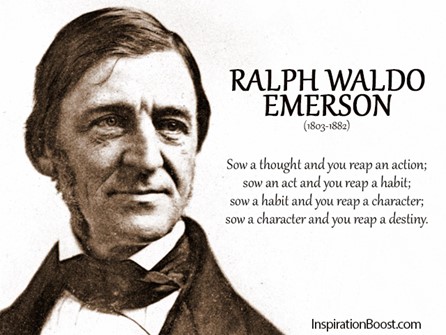Epigraphs — the gatekeepers.
When I draft story, a new poem, or even occasionally when composing a letter, I consider how the reader might enter my writing. Will my words awaken them to something new, something familiar, or something dormant that rises to wakeful thoughts? Will a lasting impression or memory awaken, or will they scratch their heads in confusion?
the reader might enter my writing. Will my words awaken them to something new, something familiar, or something dormant that rises to wakeful thoughts? Will a lasting impression or memory awaken, or will they scratch their heads in confusion?
A well-placed epigraph can solve that dilemma.
“I quote others only the better to express myself.” ~ Michel de Montaigne (1533-1592)
In both writing and poetry workshops I’ve attended over the years, instructors liberally use epigraphs as prompts, or to help a writer delve deeply into an emotional pinnacle in a piece of prose. You’ll find these often familiar and engaging quotes serve as introductions to a book, a preface to chapters, or a prelude to a poem.
Yet some warn against the use of quoting others.

“Stay at home in your mind. Don’t recite other people’s opinions. I hate quotations. Tell me what you know.” ~ Ralph Waldo Emerson
But then, Emerson seems to refute this concept in a quote from one of his essays: “The borrowing is often honest enough, and comes of magnanimity and stoutness. A great man quotes bravely, and will not draw on his invention when his memory serves him with a word as good.”
You can read the entire essay on “Quotation and Originality” here: http://www.bartleby.com/90/0806.html
For writers, epigraphs serve as hooks, recognizable pathways into the chapter that follows. They are the gatekeepers that add a dollop of humor, raise a question, create tension or ironic revelation, introduce action, and always provide foreshadowing. The lines may come from familiar proverbs, famous lines from other literary works, famous quotes, etc.
And the writer may also construct her own epigraphs, little teasers to entice the reader with a few simple words, as I did for a few of the epigraphs in My San Francisco Highlander.
Here, Dean Koontz explains creating his own epigraphs:
“When you get to be my age you’ve read several thousand books. When I was young I used to read at least 200 novels a year when I was trying to figure out how fiction worked and what techniques worked and what didn’t, and in the early years, I couldn’t always find things I wanted, or think of things I wanted, so I used to write epigraphs myself and attribute them to The Book of Counted Sorrows, which was a nonexistent book.
I stopped doing that because we were getting thousands of letters a year from people saying, “Where is The Book of Counted Sorrows? I can’t find it.”
I extracted the above from the following interview, which you might want to review in its entirety. http://www.nightmare-magazine.com/nonfiction/interview-dean-koontz/
The use of Latin phrases as epigraphs became quite popular in the eighteenth century. Many scholars have debated the issues of epigraph use and content, but that scholarly debate is outside the scope of this blog.
George Eliot (Victorian novelist – 1819-1880,) is probably best known for her liberal use of epigraphs in all eighty-six chapters of Middlemarch. This work has served as literature’s most frequently studied and quoted source regarding epigraphs. And the work itself has since become a common source of quotes for modern scribblers. Consider Goodreads list of George Eliot’s often used quotes from
Middlemarch: http://www.goodreads.com/work/quotes/1461747-middlemarch
As for me, epigraphs always captivate my imagination, and I analyze them carefully when found in another author’s work. A poetry workshop I attended for several years, required an epigraph preface many of our original works. The poets’ critiques scrutinized and challenged the appropriateness of each epigraph selected as vigorously as they did the poem submitted for critique. And from those sessions and other writing classes using similar techniques, I fell in love with the power of a well-chosen or written epigraph.
In book two, My San Francisco Highlander, of my Finding My Highlander Series, I employ epigraphs to introduce each chapter. In some cases, it took far more time and reflection to select the epigraph than it did to write the chapter it prefaces. Here are a few of my favorites:
Chapter One: “The only courage that matters is the kind that gets you from one minute to the next.” ~Mignon McLaughlin
Chapter Five: “Love isn’t soft like those poets say, love has teeth which bite…”~Stephen King

Chapter Eight: “The real lover is the man who can thrill you by kissing your forehead.”~Marilyn Monroe
Chapter Thirteen: “Write sorrow on the bosom of the earth.” ~William Shakespeare (from The Death of Kings)
Epilogue: “There is no remedy for love but to love more.” ~Henry James
